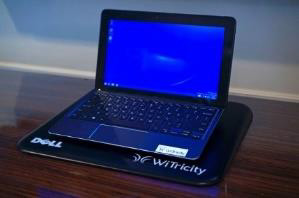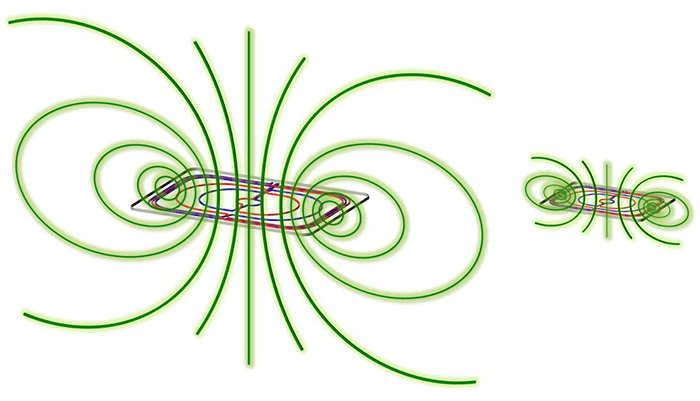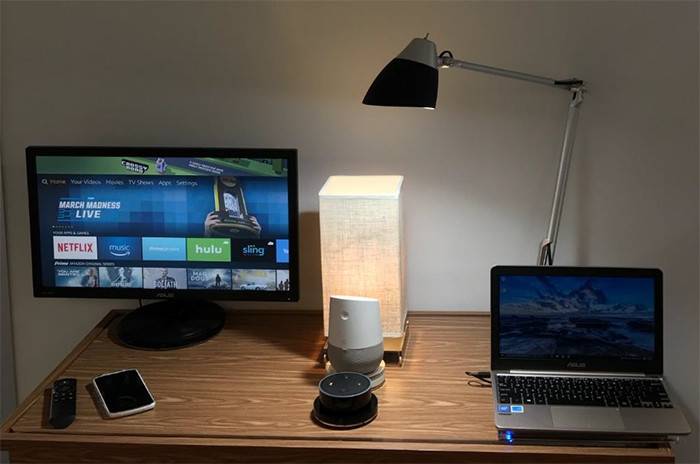How2 Cut The Power Cord: Wireless Power Is Ready For Prime Time
GaN Talk – Alex Lidow, Ph.D.
Jun 21, 2017
This post was originally published on the How2Power web site. Learn more about eGaN technology here and EPC GaN solutions for wireless power here.
Wireless charging is not a new topic—it has been talked about for quite a while. Unfortunately, it has not seen widespread consumer acceptance. But, with a recently developed innovative approach to the design of transmission coils, wireless power is ready for widespread application.
Competing Standards
Two industry standards groups have been leading the charge to take wireless power to consumers. The first standards group to promote wireless charging is the Wireless Power Consortium (WPC) with their Qi standard, which is based on inductive charging technology. The second group is the AirFuel Alliance, which utilizes highly resonant magnetic fields for their solution. It is resonant magnetic technology that will make wireless power an everyday, everywhere technology.
Inductive charging requires precise position alignment between transmitter and receiver, and can only power one device at a time. This technology is currently the most recognizable to the consumer, since it is the technology employed to charge toothbrushes. Severe limitations of this technology are that it requires precision placement of the receiving device (e.g. toothbrush) relative to the transmitter (cradle) that houses the power source and it can only power one device at a time.
In contrast, the AirFuel standard technology provides power to the receiving device anywhere it is placed on the transmission coil surface area. In addition to this clear advantage for the consumer, using magnetic resonance allows multiple devices (receivers) to be powered (or charged) simultaneously.
When Will We See Widespread Applications?
So, where are all the AirFuel-enabled cell phones and computers? They are on the way; unfortunately, at present, slowly. However, the introduction of end-user devices is picking up momentum and more applications are on the way.
For example, Dell Computers recently announced their 2-in-1 Latitude computer that will have the capability to be charged wirelessly[1] (see Fig.1). In addition, more than 12 highly resonant magnetic charging products have received certification from AirFuel.[2] But why so slow an uptake for this seemingly superior standard?

Fig. 1. Dell’s 2-in-1 Latitude computer is wirelessly charged using a highly resonant magnetic power-transmitting unit (PTU) based on the AirFuel standard.
Being able to power several items simultaneously and without having to worry about positioning receiving units directly over a transmitting surface over extremely large areas would be ideal. But, it turns out that it is surprisingly difficult to achieve. The problem can be broken into two main challenges; (1) powering multiple devices simultaneously, and (2) the larger the charging area, the larger the transmitting antenna has to be.
As the resonant magnetic antenna grows in size, so do the magnetic fields that extend further out, thus increasing interference with other electronics within range (see Fig. 2). In addition, a larger antenna becomes more susceptible to off-resonance shifting, which severely impacts transmission efficiency and transmitter system cost.

Fig. 2. As the resonant magnetic antenna grows in size, so do the magnetic fields, thus increasing the likelihood of interference with other electronics within range.
Solving The Problems
Solving problem number 1, charging multiple devices simultaneously, has been addressed in the AirFuel standard by defining a pre-determined set of device (receiver) and source (transmitter) paring combinations. An example of a defined combination is a class 3 source, rated at 16 W, that is paired with two category 3 devices, rated at 6.5 W each, or one category 4 device, rated at 13 W. This reduces the impact of maximum power demand imposed on the system to within the amplifier capability but unfortunately does not address the growth of the consumer ecosystem over the longer term. Alternatively, amplifier technology with increased voltage drive capability range is needed.
Two amplifier architectures have emerged that dominate wireless power solutions. They are the zero-voltage switching (ZVS) class D and the Class E power amplifiers. ZVS class-D amplifiers are less sensitive to antenna load variation due to their very low output impedance and they can be scaled easily and cost effectively to increase their output voltage drive range. Class-E amplifiers, although simpler in design, require more complex and costly circuits coupled with more expensive and complicated EMI filtering to increase the output voltage drive range capability. Both topologies are more efficient when employing gallium nitride (GaN) transistors or ICs and are now used in commercial products.
Solving problem number 2, having an antenna able to cover large areas, is significantly more difficult to achieve. Today, commercially available power transmitting units (PTUs) have an area of less than one square foot (0.01 square meters). At the core of the problem is that large antennas are hard to keep in resonance and tend to interfere with electronics even at distances greater than the X or Y dimension of the antenna itself. Recently, however, EPC developed a breakthrough in wireless power transmission systems. This breakthrough incorporates an innovative antenna design coupled with standard ZVS class-D eGaN FET-based power amplifiers. The innovative large area antenna coil addresses the uniform magnetic field requirement under the AirFuel standard, while being scalable to cover small or large surface areas of virtually any shape.
The key to the innovation was a design that limits the magnetic field distance used for power transfer. In traditional wireless power systems, as the coil area grows, so does the magnetic field and susceptibility to imaginary impedance shifting. At a certain point, the larger field becomes undesirable for various reasons such as the high cost of abating imaginary impedance variation susceptibility, increased difficulty in passing EMI standards, and having to address safety concerns associated with specific absorption ratio (SAR). Due to the coil’s unique structure, it further reduces interference between various wireless power devices and other objects placed near or on it.
The coil can be manufactured using standard processes available today thus keeping costs low. The antenna concept can also be used in wireless power devices, particularly those needing higher power, large areas, or both. The reduced impedance of the coil make them ideal for keeping the unregulated voltage variation between no load and full power within the device low.
This novel antenna can extend to any area—entire walls, floors, and countertops. The transmission system was first demonstrated at the IEEE APEC 2017 exhibition as part of a 20-in. x 40-in. (0.5-m x 1-m) tabletop that could simultaneously power a variety of common products such as a desk lamp, an Amazon Echo Dot, a notebook computer, a computer monitor, and a smart phone (see Figs. 3 and 4).

Fig. 3. No power cords are needed for any of the items on this tabletop.
This tabletop goes beyond wireless charging to provide continuous power to devices wirelessly. In the tabletop demonstration, the computer monitor, Amazon Echo, and table lamp did not have batteries, but were powered directly by the transmitter positioned below the tabletop surface.

Fig. 4. Small and inexpensive antennas are used as power receivers for the variety of loads powered wirelessly. Those shown here include an ASUS 21-in. monitor (a), an Amazon Echo Dot (b), a Google Cortana (c) and a desk lamp (d).
In addition to this tabletop, the flexible design transmission coil can be economically incorporated into walls, upon which flat-screen TVs, speakers, and wall sconces can be hung without the need to be physically “plugged in.” Likewise, kitchen countertops can become platforms for powering blenders, toasters, and coffee machines without the danger of mixing water and electricity. Conference room tables can power the laptops of the participants and, in the near future, can power forthcoming augmented reality systems used to enhance the presentation of the meeting.
Wireless Power Is Ready For Prime Time
We are ready to cut the cord, and have the complete wireless power transmission system to make our homes and offices truly wirelessly powered and eliminate unsightly, inconvenient, and at times, dangerous power cords. This new development in transmission antenna technology will finally usher in the long-awaited age of wireless power and usher out the much hated power cord!
References
1. “This Dell 2-in-1 laptop can wirelessly charge through its keyboard” by Nick Statt, The Verge, January 6, 2017.
2. AirFuell Alliance’s list of Certified Products.